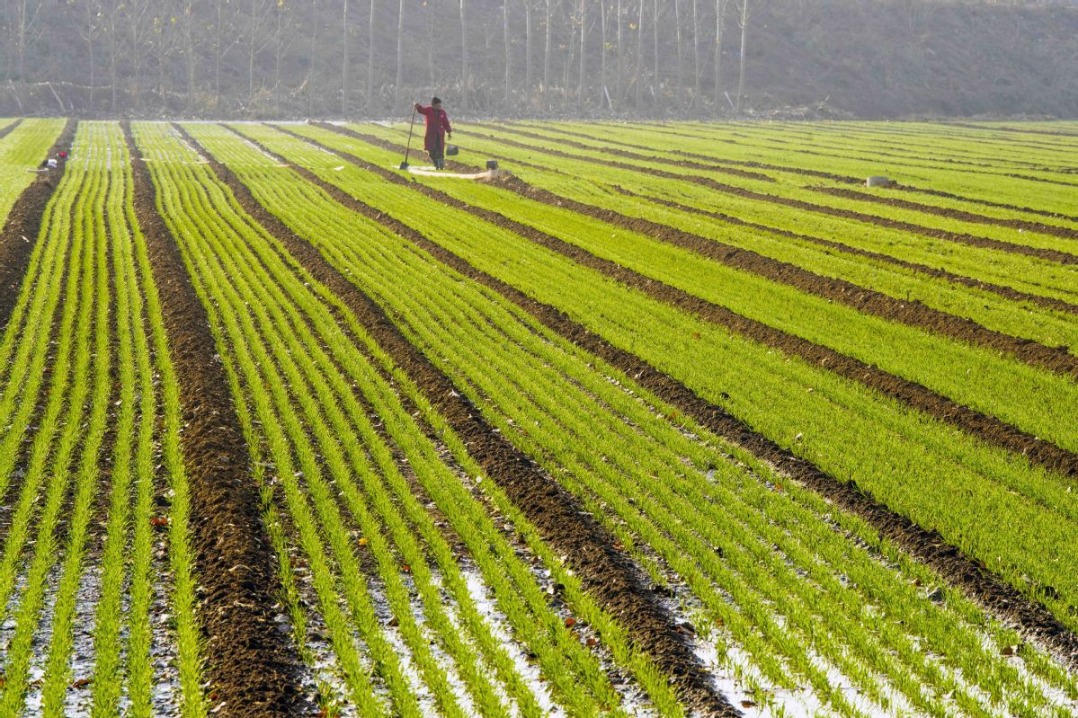Plan issued to upgrade rural connectivity
Villages to get smoother roads, better buses and stronger economic links

China has unveiled a new national plan to build and upgrade 300,000 kilometers of rural roads by 2027, aiming to boost connectivity, improve road safety and support rural vitalization, according to a policy document released on Wednesday.
The New Round of Rural Road Improvement Action Plan, jointly published by the Ministry of Transport, the Ministry of Finance and the Ministry of Natural Resources, aims to build a convenient, efficient, inclusive and equitable transportation network across rural areas in China.
In addition to building new roads, another 300,000 km of rural roads will undergo restorative maintenance, with the proportion of roads in good technical condition expected to remain above 70 percent. China also plans to implement 150,000 km of safety improvement projects and renovate about 9,000 hazardous rural bridges, including flood-prone or outdated structures.
The plan also targets enhanced mobility services. By 2027, more than 55 percent of administrative villages are expected to have access to public bus services. Counties with suitable conditions are encouraged to integrate rural passenger, freight and postal services.
The initiative is part of China's broader goal to build a modern rural transportation system that is well-structured, high-quality, efficiently managed and provides strong support for rural development by 2035.
Rural roads are a vital component of China's vast highway system. By the end of 2024, the country's total road coverage reached 5.49 million km, with rural roads accounting for 4.64 million km — nearly 85 percent of the total.
"The national campaign to improve rural roads is not just an infrastructure project — it's a people-centered program that directly improves livelihoods," said Minister of Transport Liu Wei at a news conference last month in Beijing.
Since 2012, China has invested more than 4.9 trillion yuan ($682 billion) in rural road infrastructure and over 1.2 trillion yuan in maintenance. The extensive rural road network now links townships and villages across the country, forming a backbone for rural connectivity.
To date, all of China's over 30,000 townships and 500,000 administrative villages are connected by paved roads. About 97.3 percent of rural roads meet classified technical standards, and 94.8 percent are in good or fair condition.
"The days when villagers had to endure 'muddy roads in rain and dusty roads in sunshine' are long gone. Private cars can now reach even the most remote corners of the countryside, making travel easier for migrant workers and family visits — and spurring the rise of rural tourism and self-driving vacations," Liu said.
"Our countryside is becoming more beautiful," the minister added. "In recent years, we've turned many of our rural roads into popular tourist destinations. For example, Shanxi's tourist highways — along the Yellow River, the Great Wall and the Taihang Mountains — now connect 5,630 villages and showcase the province's stunning landscapes. These roads have boosted the two-way flow of people, goods and information between cities and villages, transforming rural areas and supporting the creation of livable and vibrant communities."
China is also leveraging rural roads to drive economic growth in the countryside. The country is developing roads that directly support industries, tourism and resource development.
New forms of rural business — such as agritourism, fruit picking and livestream e-commerce — are thriving along these improved roads.
"We've seen a surge in roadside businesses that bring prosperity to entire communities," Liu said.
In addition, local governments are creating rural road maintenance jobs, enabling villagers to earn incomes close to home while helping to maintain local infrastructure.
Even in remote areas, residents are now experiencing the benefits of better transportation as a result of upgraded rural roads.
In Songde village, perched at an altitude of 3,150 meters in the mountainous Aba Tibetan and Qiang autonomous prefecture of Sichuan province, the benefits of rural road improvements are tangible.
"At one time, hardly anyone left the village because it was just too remote. There were no proper roads — only dirt tracks that became dangerously slippery when it rained," said Lopin, a local resident who goes by only one name.
The real change came in 2019, when a 4.2-km paved road linked the village directly to National Highway G227. Since then, more villagers have ventured out to work in nearby towns, investing in motorcycles, tractors and cars. The average annual income in the village has risen from 6,000 yuan in 2016 to more than 16,000 yuan today, according to local officials.
"Our lives have truly changed," Lopin said.
- Cleaning staff transform fallen ginkgo leaves into campus art sensation
- Chinese scientists weave tiny polymer capable of towing car
- Hebei to expand transportation projects during 15th Five-Year Plan period (2026-30)
- Nankai University scholar publishes long-lost Latin translation of Tao Te Ching
- Aurora seen in Heilongjiang, NE China
- Courts enhance efforts to combat crimes against women and children





































